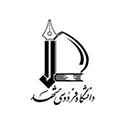چکیده:
در مطالعات مترجم، مطالعۀ سبک ترجمهای مترجمان، بهویژه از دیدگاه جامعهشناسی، حوزهای توسعهنیافته است؛ بنابراین، پژوهش حاضر، نظریّۀ «عمل بوردیو» را بهعنوان چارچوب نظری جامعهشناسی جهت مطالعۀ نمودهای عادتوارۀ مترجم به کار گرفته است. بدین منظور در ابتدا، پیکرهای موازی از دو کتاب Moby- Dick; or The Whale وTo the Lighthouse و دو ترجمه از هر یک از این دو کتاب با شیوۀ نمونهگیری تصادفی ایجاد شد. یکی از ترجمههای هر دو کتاب توسط صالح حسینی انجام شده است. نمونهها با بررسی دقیق خروجیهای نرمافزار «انتکانک»، در سطوح ساختواژه، انتخاب واژگان و عبارات مطالعه شدند و نسبت «نوع-واژه» به «نماد-واژه» محاسبه شد. افزون بر این، بهمنظور تأیید یا رد یافتهها، مصاحبهای نیمهساختارمند با صالح حسینی انجام شد. نتایج نشانداد که ابعاد مختلف سبک ترجمهای صالح حسینی از جمله گرایش به استفاده از واژگان عربی و ادبی کهن، گرایش به استفاده از ساختواژههای متنوّع و آرایههایی چون تتابع اضافات، میتواند گواهی بر عادتوارۀ ترجمهای وی باشد که از طریق میدانهایی که صالح حسینی در آنها به سر برده و موضعی که در آن میادین داشته است، قابل تبیین هستند. میدانها، تجربیات زندگی و ارتباطات صالح حسینی با کنشگران متعدّد، سبک وی را در ترجمه شکل دادهاند و میتوان آن سبک خاص را سبک کهنگرای صالح حسینی نامید.
Translator studies, as a recent subfield of Translation Studies, focuses explicitly on translators rather than translated texts since translators create texts. While translators have been studied from different cultural and cognitive perspectives, their translatorial style from sociological perspectives has been remained underexplored. Against this backdrop, this study used Bourdieu’s theory of practice as a sociological theory to study major traces of Saleh Hosseini’s habitus in his translatorial style. To this end, a corpus from samples of Moby-Dick; Or the Whale and To the Lighthouse and their Persian translations was made. To study the samples, AntConc outputs were examined at morphological, lexical, and phrasal levels. Moreover, a semi-structured interview was conducted with Saleh Hosseini to complement and validate the findings. The results indicated that several aspects of Saleh Hosseini’s translatorial style, including his tendency towards using Arabic, literary, and archaic words, together with his inclination to use a wide variety of lexical items and sequence of genitive can be accounted for by the fields he comes from; in other words, his cultural capital and his primary and secondary habitus. His fields, life experiences, and interactions with various agents have shaped his style in translation, which can be known as Saleh Hosseini’s archaic style.

(پژوهیار,
,
,
)

